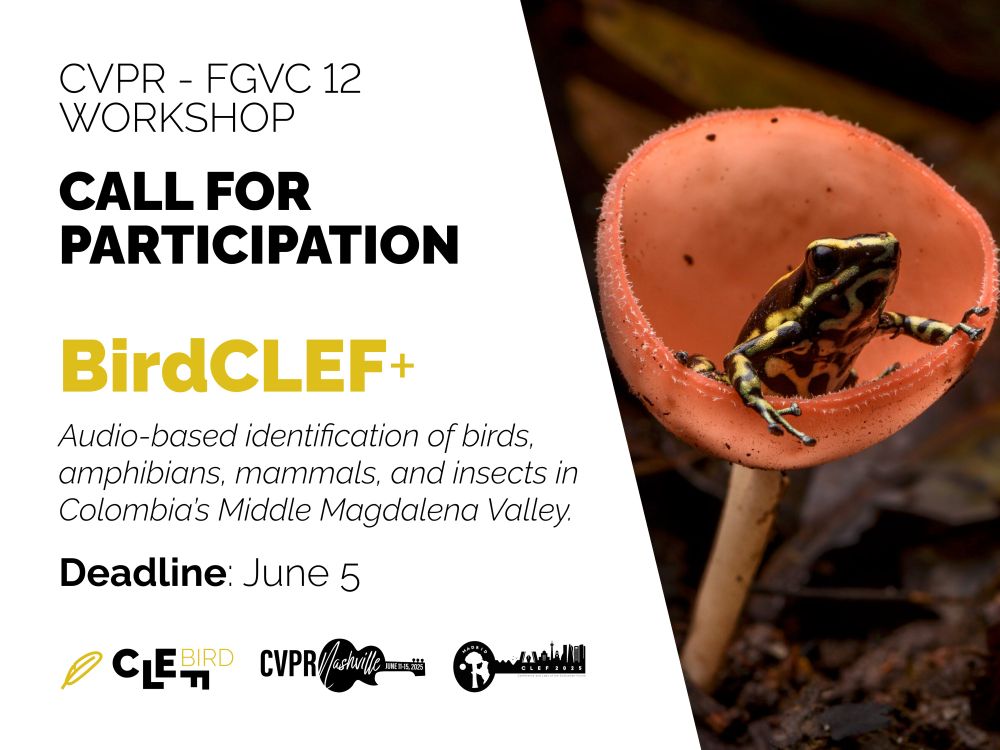Poster Session 1 Tuesday 10/21 11:45am, and Demo Session 6 Thursday 10/23 at 2:30pm.
Paper: www.arxiv.org/abs/2507.23771
Demo: huggingface.co/spaces/justi...
Code: github.com/justinkay/coda
@csail.mit.edu News:
bit.ly/48s6yS2
8/8

Poster Session 1 Tuesday 10/21 11:45am, and Demo Session 6 Thursday 10/23 at 2:30pm.
Paper: www.arxiv.org/abs/2507.23771
Demo: huggingface.co/spaces/justi...
Code: github.com/justinkay/coda
@csail.mit.edu News:
bit.ly/48s6yS2
8/8
Try it yourself! We built a fun demo for finding the best wildlife classification model with @hf.co and @gradio-hf.bsky.social: huggingface.co/spaces/justi...
7/
Try it yourself! We built a fun demo for finding the best wildlife classification model with @hf.co and @gradio-hf.bsky.social: huggingface.co/spaces/justi...
7/



👉 www.kaggle.com/competitions...
@cvprconference.bsky.social @kaggle.com
#FGVC #CVPR #CVPR2025 #LifeCLEF
[1/4]

👉 www.kaggle.com/competitions...
@cvprconference.bsky.social @kaggle.com
#FGVC #CVPR #CVPR2025 #LifeCLEF
[1/4]
Paper: arxiv.org/abs/2403.12029
Codebase (consider giving us a star!): github.com/justinkay/aldi
Dataset: github.com/visipedia/ca...
Team: @timm.haucke.xyz, Suzanne Stathatos, Siqi Deng, Erik Young, Pietro Perona, @sarameghanbeery.bsky.social, and Grant Van Horn
Paper: arxiv.org/abs/2403.12029
Codebase (consider giving us a star!): github.com/justinkay/aldi
Dataset: github.com/visipedia/ca...
Team: @timm.haucke.xyz, Suzanne Stathatos, Siqi Deng, Erik Young, Pietro Perona, @sarameghanbeery.bsky.social, and Grant Van Horn
- SOTA results across architectures (Faster R-CNN, DETR, YOLO), backbones (ResNet, ConvNeXt, ViT), datasets
- Unified benchmarking & implementation framework, making it easy to develop and test new adaptation methods
- A new real-world adaptation dataset sourced from fisheries sonar
- SOTA results across architectures (Faster R-CNN, DETR, YOLO), backbones (ResNet, ConvNeXt, ViT), datasets
- Unified benchmarking & implementation framework, making it easy to develop and test new adaptation methods
- A new real-world adaptation dataset sourced from fisheries sonar

